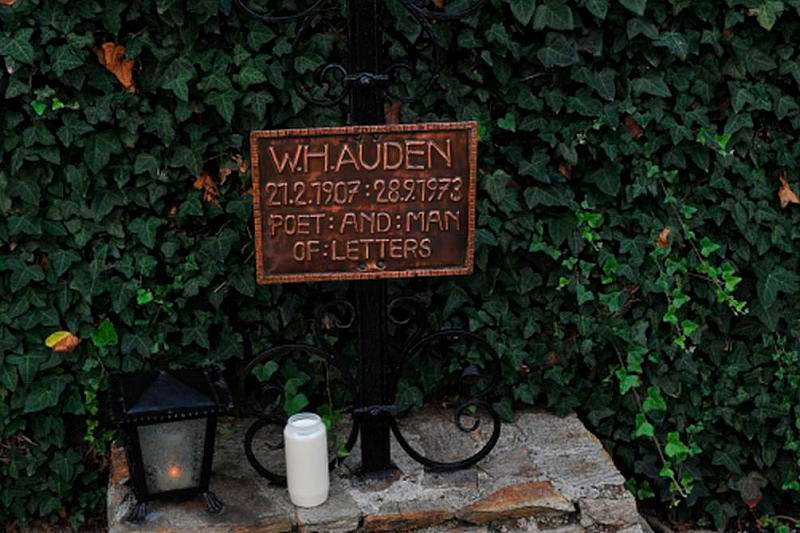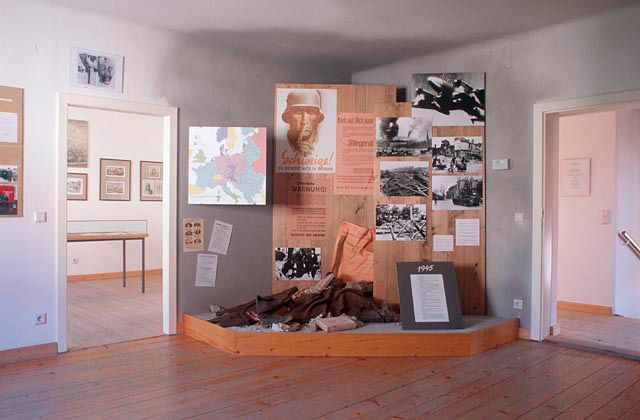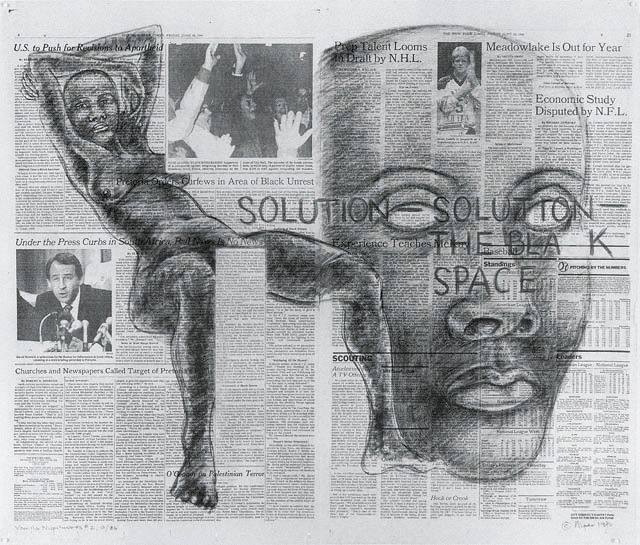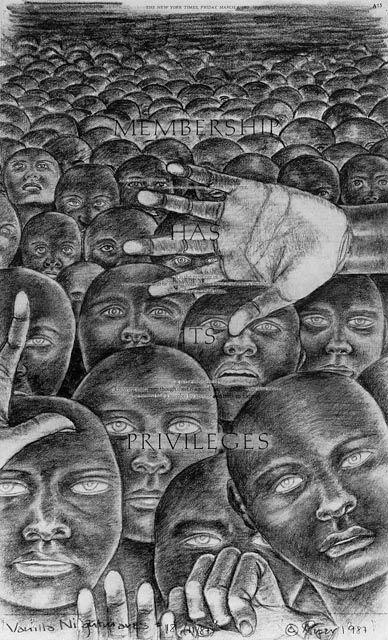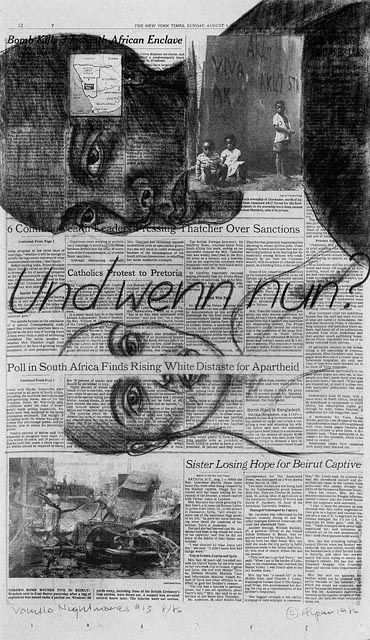Erlauf Remembers ... I
BackArtists
- With
Information
The 1200 inhabitants of the Erlauf in the district of Melk owe the knowledge of the village's participation in world history to an émigré who had to flee to the USA in 1938 because of racism. Almost unnoticed by the local residents, this was the site of the historic handshake between an American general and a Soviet general when Nazi Germany capitulated on 8 May 1945. The central issue of the exhibition was the necessity of coming to terms with our past and the need for increased sensitivity towards exclusion, racism and everyday manifestations of fascism. 'Erlauf erinnert sich ...' was not intended to provide a historical look back. The focus of the exhibition is on racist tendencies today and the way history is being dealt with.
Contributors
- Kuration
Contributions
Ines Doujak
Ines Doujak alluded to a special topic in Austrian post-war history – the treatment of minorities. Taking the Carinthian Slovenians as an example, she showed preconceptions and misconceptions associated with the term 'Heimat' (homeland). She used showcases to provide information on the provincial state, the borders, the language, 10 October and the resistance. A festschrift and a Carinthian Heimat evening gave local residents an opportunity to discuss the subject of minorities with the artist in their own hometown.
Nicole Knauer
The foreign and the alleged fear of the foreign was also the theme addressed by Nicole Knauer from Linz. Knauer collected more or less explicitly xenophobic classified ads for apartments from current examples of Austrian printed media, enlarged them and posted them on a billboard. The aim of the project was not to denounce individuals. She showed how low the social thresholds had become, allowing xenophobia to course unchecked.
Pia Lanzinger
For her four audio dramas, Pia Lanzinger asked old women from Erlauf about the identity of their community as a 'Community of Peace', about migration and ageing, current politics and the world wars. The artist showed subjective experiences of contemporary history with all the vitality of the highs and lows of people's private lives. Lanzinger was not concerned with a moral approach to social deficits, she wanted to show the changes in society and to whet people's appetite for communication. The plays could be heard over a 'Phonomat' next to the telephone box or via telephone. A showcase in the Maureder coffee shop displayed mementos belonging to the women.
Adrian Piper
The American Adrian Piper is among the first to address and reflect on racist and sexist conditions with the means available in the contemporary art context. A series of her 'Vanilla Nightmares' drawings were shown in the Erlauf memorial. Piper shows the discriminatory content of reports on black people and attempt to undermine the cliché of evil, of the rapist, by re-drawing each of the images upon which the clichés concerned are based.
Clemens Stecher
Clemens Stecher placed an installation consisting of collages and objet trouvé in the window of a former tailor's shop. He addresses the possibilities of artistic reaction to the contemporary media reality, which delivers diverse impulses for equally diverse aesthetic responses. Stecher builds his visual arrangements from the daily images and headlines of the news agencies, from advertising, trivial books and cheap novellas. The themes showed the difficulties intrinsic to the subject who defines their own social role. The allusion to popular culture alludes to the foreign and what is apparently one's own. the painting of a book-burning hung inside. In this, Stecher was reflecting the anti-intellectual stance which is spreading in Europe parallel to the strengthening of the extreme rightwing in Europe.
Milica Tomić
Milica Tomic alluded to the memorial by the Russian Oleg Komov erected in 1995. She took the sculpture made in the Socialist tradition as the starting point for her photographs, replacing the little girl standing between the two representative heroes of Soviet and American origin by images of friends and people from the community. The artist selected people from her own generation, 30-40 year olds who have only heard about the Second World War, and challenged them and the visitor to think about 'being in-between' today and then. Panorama views of Erlauf taken from this bronze girl's vantage point were to be seen on the exit road.
